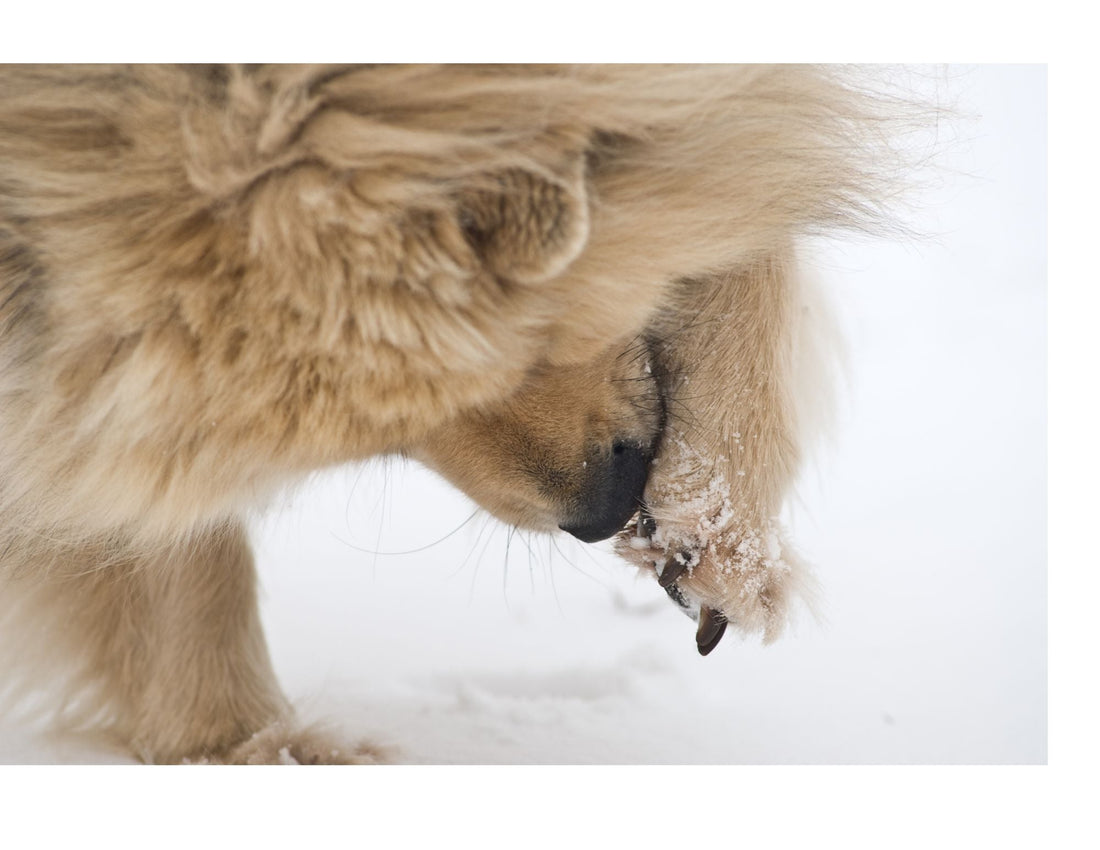Winter brings snow, frosty mornings, and cozy evenings by the fire. But for our furry friends, it also introduces challenges, especially when it comes to paw health. Ice, snow, and cold surfaces can take a toll on your dog’s paws. With a little care and attention, you can keep their paws safe and healthy throughout the chilly months. Here’s how:
1. Moisturize Regularly
Cold weather can dry out your dog’s paw pads, leading to cracks and discomfort. Use a pet-safe paw balm or moisturizer to keep their pads hydrated. Apply it before and after walks to protect against the elements and soothe any dryness.
2. Trim Fur Between the Toes
Ice and snow can cling to the fur between your dog’s toes, causing matting and discomfort. Regularly trim this fur to minimize ice buildup and make cleaning easier after walks.
3. Inspect Paws After Walks
Check your dog’s paws for cuts, cracks, or lodged debris like ice, salt, or small stones. Gently wipe their paws with a warm, damp cloth after each outing to remove irritants and prevent licking of harmful chemicals like road salt.
4. Use Paw Protection
Dog booties are a fantastic option for shielding paws from snow, ice, and de-icing chemicals. If your dog isn’t a fan of booties, apply a protective paw wax before heading outdoors. It creates a barrier between their pads and harsh surfaces.
5. Avoid Prolonged Exposure
Even with precautions, cold surfaces can cause frostbite or discomfort. Limit the time your dog spends walking on icy or snowy terrain. Stick to shoveled paths and avoid standing water, which can chill their paws quickly.
6. Opt for Pet-Friendly De-Icers
If you use de-icing products at home, choose pet-safe options to reduce the risk of chemical burns or ingestion. Regular salt and chemical de-icers can irritate paws and harm your dog if licked off.
7. Condition Their Paws
Toughen your dog’s paw pads by gradually introducing them to colder surfaces before winter fully sets in. Short walks on cool but not freezing ground can help their pads adapt to winter conditions.
8. Feed a Balanced Diet
Healthy paws start from the inside. A well-balanced diet rich in omega-3 fatty acids supports skin and coat health, including paw pads. Consult your vet for the best options for your dog’s needs.
9. Stay Alert for Warning Signs
Watch for signs of paw discomfort, such as limping, excessive licking, or redness. If you notice these, consult your veterinarian. Early intervention can prevent minor issues from becoming major problems.
10. Keep Nails Trimmed
Long nails can change the way your dog’s paw interacts with the ground, increasing the risk of injuries. Regular trimming ensures proper traction and reduces the chance of broken nails.
Following these tips, you can ensure your dog’s paws remain healthy and comfortable all winter long. A little extra care goes a long way in making the season enjoyable for both you and your furry companion!
📸 Share your journey: Tag us in photos or videos of your dog playing in the snow!! You can also email them to hello@yeti.pet we LOVE to see your photos and videos!
Follow us on social media!
Subscribe to our emails to stay connected and learn about our exclusive saving offers.

